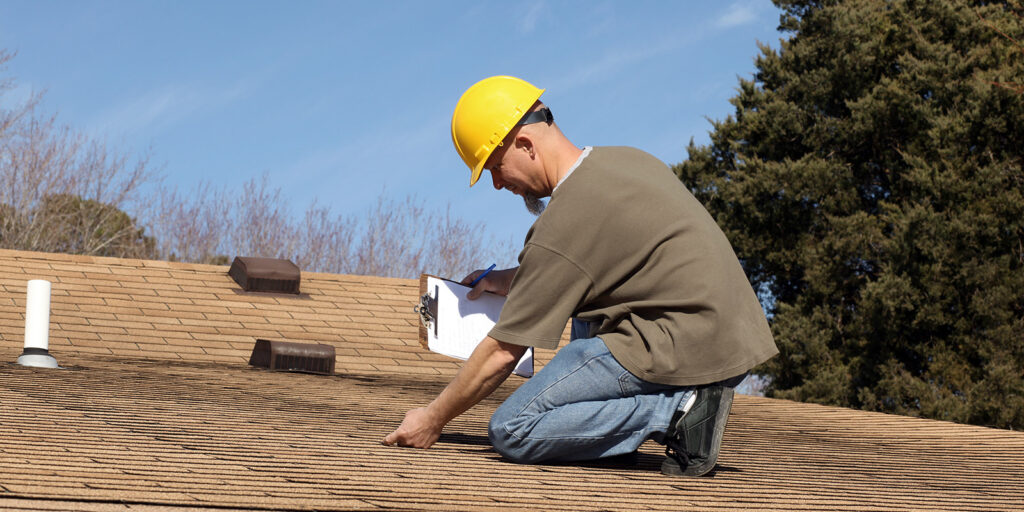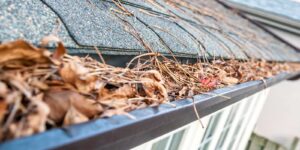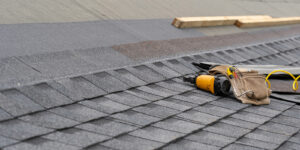Your roof is perhaps the most essential part of your home. It protects you and your family from cold in the winter, heat in the summer, and keeps you dry during rainstorms year-round. Unfortunately, many homeowners don’t pay attention to their roof until there is a significant problem. And there are roofing companies out there that will take advantage of that.
Did you know that many Maryland roofing companies can’t even make small roof repairs? It’s true! Most roofing contractors don’t have the resources to repair your roof because it isn’t cost-effective for them. Instead, they will sell you an expensive and unnecessary new roof. Even if your roof can be repaired! Become an informed homeowner, so you can avoid these shady business practices. Learn about when to repair your roof and when it likely needs to be replaced below.
When to Repair Your Roof
Sometimes, all your roof will need is a repair. This is a part of regular maintenance over a roof’s lifespan, so be sure to check your roof regularly (we suggest every spring and fall) to spot problems early. If you find a small roof leak and repair it quickly, you may be able to avoid an expensive roof replacement. If your roof meets the criteria below, you may simply need a repair.
- Your roof hasn’t hit the decade mark yet.
The age of a roof plays a big part in its overall health. The longer a roof has been exposed to the elements, the more opportunity for something to go wrong. If it’s less than ten years old, your roof can probably be repaired. - You notice a few missing shingles.
It is not unusual for a few shingles to blow off during a particularly strong wind storm. If you notice a few shingles on your lawn, they may even be able to be reattached. But the shingles must be reattached as soon as possible, so your home doesn’t experience any water damage. - Some elements have lost their seal.
When the outdoor air changes from hot to cold, your roof expands and contracts. This can create gaps around nails and flashing. These exposed elements can be easily repaired by a roofing professional with caulk and new fasteners. - You see a few exposed nail heads.
Nail pops are a common roofing problem. They can be caused by expansion and contraction due to the weather, or under-driving during installation. Either way, hammering nails back in is an easy fix.
When to Replace Your Roof
Now that you understand when a repair is all your roof needs let’s take a look at when it’s a good idea to completely replace your roof.
- Your roof is over 15 years old.
Standard asphalt roofs have a lifespan of about 15-20 years, whereas metal roofs can last up to 50 years. But regardless of the type of roof you have, you need to consider age when deciding to repair or replace it. - You see moisture or water damage.
Your roof has many layers that act as a system. You should look at the outside of your home, but you also need to look at the interior. A professional roofer will check your attic for signs of water damage. If water has seeped under shingles and through the plywood decking, then it’s best to consider replacing the shingles and decking. - You notice loose granules in your gutters or yard.
It is common for asphalt roofs to shed some graduals, especially after a massive storm. But if you see excessive amounts of granules in the gutters, then that’s a sign your shingles are reaching the end of their lifespan. - There are dark streaks on your shingles.
Most of the time, dark streaks on the roof are mildew that is growing on the shingles. Once they are at the point you can see them, the dark areas are collecting water that has made it under the surface of the shingle. Mildew will only continue to grow in this environment. Since there is moisture underneath the shingle, you should have the entire roof replaced. - The shingles have signs of damage, such as curling.
Shingles are built to be flexible, so they can adjust to temperature changes. Once shingles are curling or dry rotting, they are no longer able to make this adjustment. That means water will likely get underneath. - The plywood decking has water marks.
Water is destructive to your home, as it can lead to mold growth and other health problems. If you notice water in your home, either on the plywood decking under the shingles or on the drywall in other areas of the house, you will likely need a full roof replacement.
Before signing a contract with a roofer to repair or replace your roof, make sure you ask the right questions. Will they conduct a thorough inspection of the outside of the house? Are they going inside your attic to see the decking, insulation, and ventilation before making their recommendation? Are they able to make both small repairs and full replacements? Are they licensed and insured per your state laws? If they answer no to any of these questions, keep looking for a qualified roofer!




